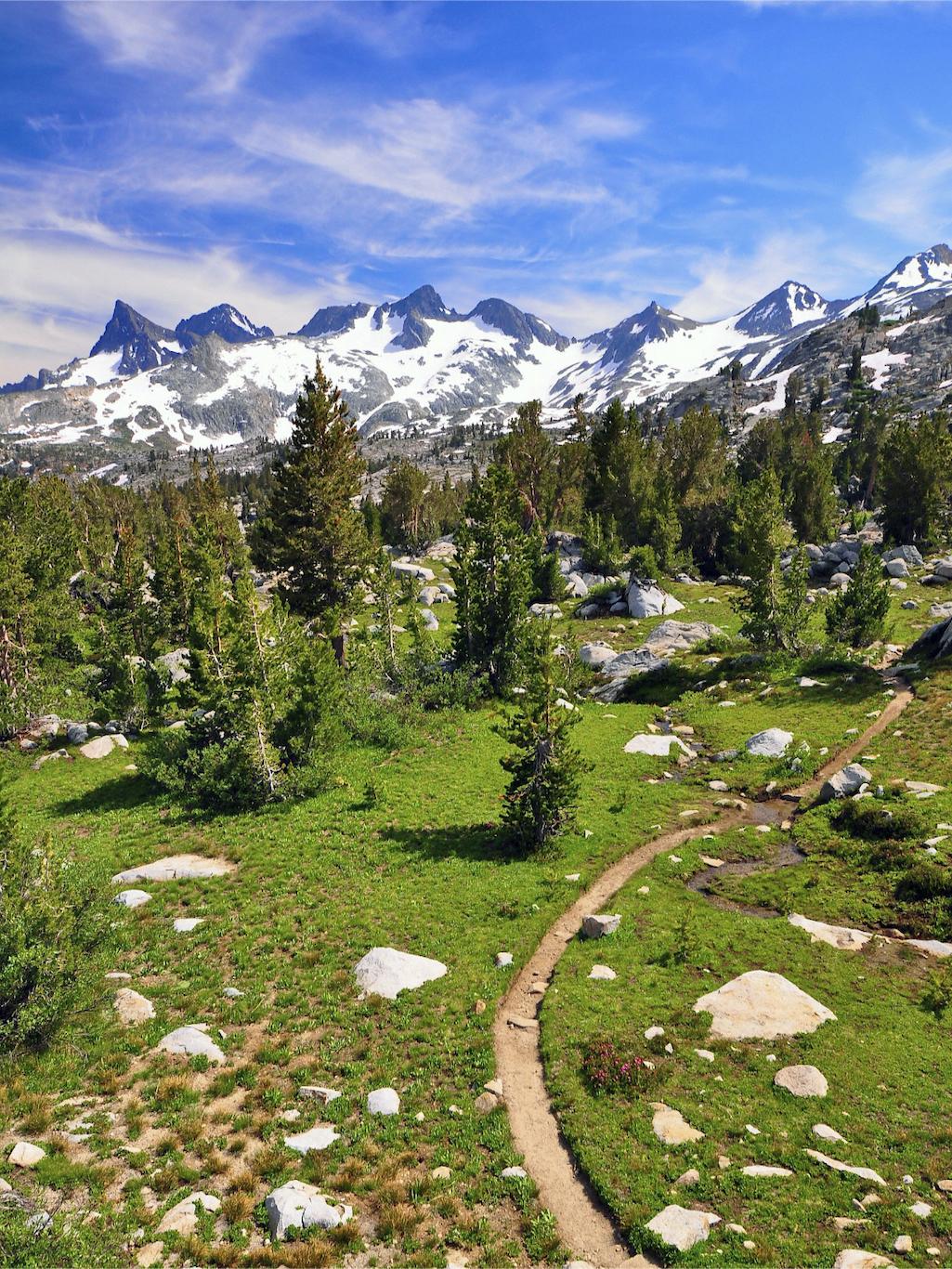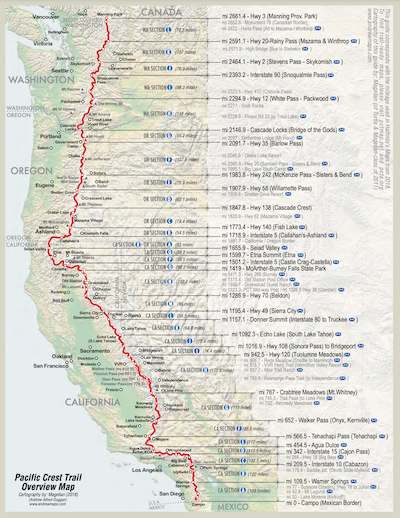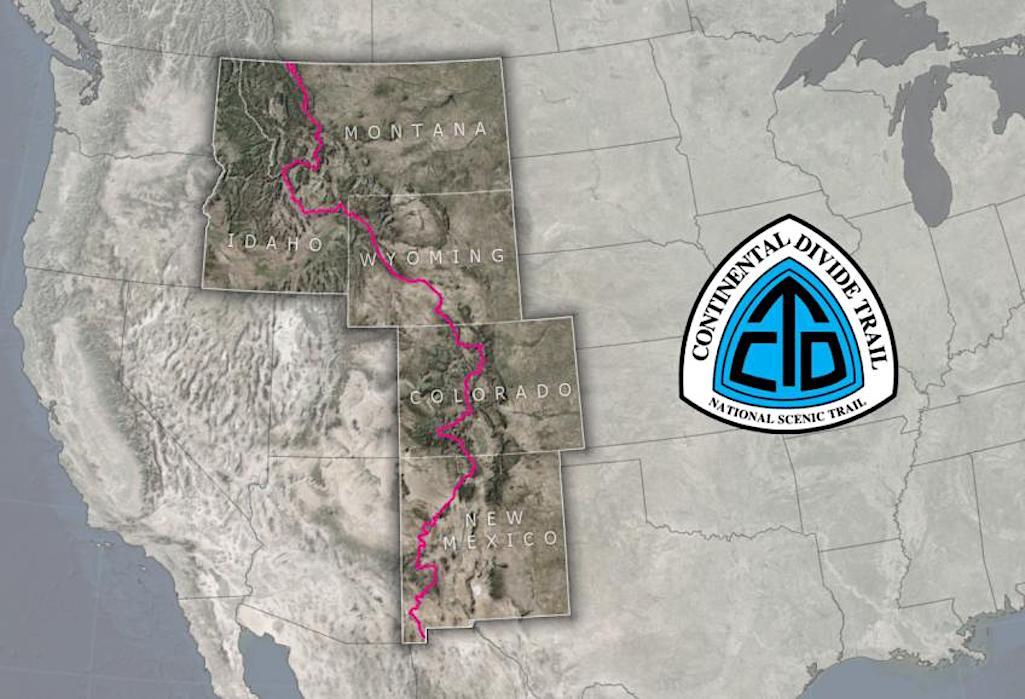
Long-distance trails, such as the Pacific Crest Trail, are natural biodiversity corridors and might better serve that purpose with a little more protection, according to a recent paper/Steve Dunleavy via Wikipedia. CC by 2.0
As climate change continues to alter habitats for plants and animals, and as the call for a national biodiversity strategy gets louder, the country's long-distance hiking trails could prove to be valuable corridors for species.
Warming landscapes, and especially those in the West struggling with drought, force species to move to more suitable locations, but that's not always easily accomplished as they often are blockaded or otherwise confronted by human development. A recent paper, however, notes that the Pacific Crest Trail as well as the Continental Divide Trail and their surrounding landscapes might be able to play roles in meeting the late E.O. Wilson's half-earth proposal as well as the Global Deal For Nature. Both call for preserving 50 percent of Earth for Nature.
In April 2022 in Kunming, China, world leaders will gather to set new targets to protect nature under the United Nations Convention on Biodiversity (CBD). The last global targets, set in 2010, were simply not ambitious enough, and we have seen the consequences. According to the Living Planet Report (2018) in the past few decades animal populations have declined by 60%, one-fifth of the Amazon rainforest has been destroyed, and we’ve lost one-half of the world’s shallow water coral reefs. Only about 15% of the world’s lands and 5% of the world’s oceans are now formally protected. -- Global Deal For Nature.
In looking out across the United States for biodiversity corridors, Mel Wilson and R. Travois Belote realized the potential the two trails hold for aiding in the preservation of biodiversity. Part of the beauty, they noted, was that 88 percent of the lands around the PCT and 90 percent of that around the CDT are already owned by the American public. Those trail corridors, they said, possibly "holds the highest ecological integrity across the country."
At the same time, "only 41 percent of the contiguous United States is intact enough to allow for species movement," wrote the two in their paper, The Value of Trail Corridors for Bold Conservation Planning, that appeared in the journal Land earlier this year.

The Pacific Crest Trail stretches from Mexico to Canada/Pacific Crest Trail Association
The PCT in particular "provides a logical wildlife corridor" because it was created in 1936 and since then protected areas have surrounded it, noted Wilson, who works in the Sustainability Program at Harvard University, and Belote, who works for The Wilderness Society.
The two trails pass through numerous national forests and also link a more than a few national parks, which by their very nature are pockets of biodiversity, though some are in danger of becoming biological islands. The PCT, for example, passes through Sequoia, Kings Canyon, Yosemite, Lassen Volcanic, Crater Lake, Mount Rainier, and North Cascades national parks, while the CDT connects El Malpais National Monument, Rocky Mountain, Yellowstone, and Glacier national parks.
The landscapes along the two trails rank highly in terms of wildland values for biodiversity richness, ecosystem representation, and wildland conservation.
"... as the climate changes, 66 percent of the PCT was in the top 50th percentile of the most important wildlife corridor routes and 82 percent of the CDT was in the top 50th percentile," wrote Wilson and Belote. "Landscapes near Glacier and Yellowstone National Park as well as land units in Southern California and near Yakima, Washington, in the north could be valuable land units along the CDT and PCT corridor over the next 100 years."
To best serve as biodiversity corridors, the two called for the trails to be protected by two-kilometer-wide buffers, something Congress could designate.
"To put this in perspective," they wrote, "the U.S. Forest Service manages 781,340 square kilometers and wildlife corridors along the PCT and CDT would need less than 1 percent of their current reserve. Meanwhile, the BLM manages 243 million acres, and wildlife corridors would need less than 0.08 percent of their reserve."
Some additional lands from state and regional agencies would be needed to complete the buffers, wrote Belote and Wilson. Whatever privately owned acres would be needed could be pursued through conservation easements or "purchased by conservation NGOs," they added.
"The time is now to set aside land for other species and for ourselves. In South America, Chile has made a commitment to expand their national parks, and then connect them through the 'Ruta de Parques,'" the authors wrote. "To complete the project, Chile’s President, Michelle Bachelet, partnered with Tompkins Conservation, a private land trust, to procure the largest land donation in history and the protected area network is slated to make the Chilean reserve system the longest in the world.
"... By conserving adjacent lands to scenic trails in North America, a wild, connected, and diverse continental corridor could diminish the continued loss of species in the Anthropocene," Wilson and Belote concluded.

The Continental Divide Trail traverses high-quality wildlands/USFS



Add comment